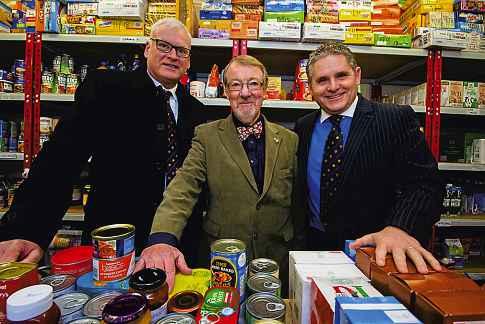
5 minute read
CHARITYATHEART OF FREEMASONS
DANIEL MORRIS TAKESA LOOK AT THE ORGANISATION’S SHROPSHIRE ARM
With roots going back to the medieval period and the traditions of the craftsmen who built theera’s castles, cathedrals andother centres of worship, Freemasonry stands as one of the world’s oldest social organisations.
Part of aglobal society built around the guiding principles of integrity,friendship, respect and charity,members of Masonic lodges across theUKband together in aspirit of fellowship, selfimprovement and outreach.
Charitable work is acornerstone of what it means to be a Freemason, with the organisation working proudly to support worthy causes on an international, national and locallevel. And in Shropshire, said work has been making waves for some time
“There are about 200,000 FreemasonsinEngland and Wales, about 1,200 of us in Shropshire,” said Stephen Rogers, Communications Officer for Shropshire Freemasons
“We’re formed into 36 individual lodges. They vary in strength between about 35 and 60 members. Each of those lodges has aprovisionwhereby when you sign up to be aFreemason you will make such regular donations to charity as you can afford, and these are directed through the ShropshireMasonic Charitable Association (SMCA).
“Every lodge will make acontribution towards the association, as well as making individual and separate lodge donations. Aportion of what we pay as our membership fee to our lodges also goes to the nationally-run Masonic Charitable Foundation, which will pool and donate national funding to worthy communitycauses.”
Last year,the lodges of Shropshire were responsible for an impressive collective donation that directly benefitted alarge number of causes that operate in the area. In all, through a combination of donations by the SMCA, the Masonic Charitable Foundation and individual lodges, Shropshire Freemasons donated some £75,000 to local causes.
“During 2022, £36,400 was distributed by the SMCA to 36 locally-based charities,” said Stephen. “They ranged from causes like Hope House Children’s Hospice to smaller charitieslike The Harry Johnson Trust.
“Of the £36,400, £10,000was specifically given to the Shrewsbury Food Hub. Shropshire Freemasonshave been supporting them alot, particularly during the pandemic when the distribution offood to people was becoming really critical. One lodge gave enough funding for them to buy aminibus. In Shropshire in particular,weare also big supporters of ascheme called Teddies ForLoving Care. Fora number of years now around the country,Freemasons have been providing teddy bears to children who are taken into hospital. The scheme didn’t start here in Shropshire, but we are particularly enthusiastic supporters of it. Children are often frightened when they go into hospital, and through the TeddiesFor Loving Care appeal, we provide the emergency departments at thehospitals in Shrewsbury,Telford and Gobowen as well as Hope House Hospice with teddy bears that can givethem abit of comfort. The feedback that we get is brilliant –itishugely appreciated by the hospitals,the children and their families.”
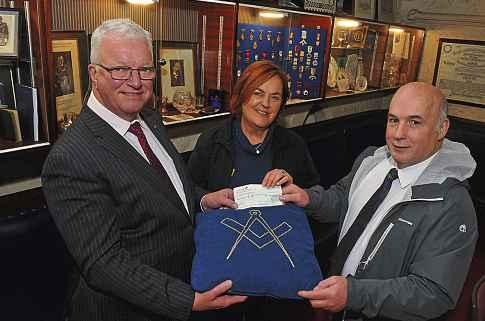
With Freemasonryalso supportingorganisations such as The British Red Cross with important international initiatives (re-uniting Ukrainian families and an emergency grant to the Turkish earthquake appeal being recent and poignant examples), charitable work at every level is at the heart of Masonic life.
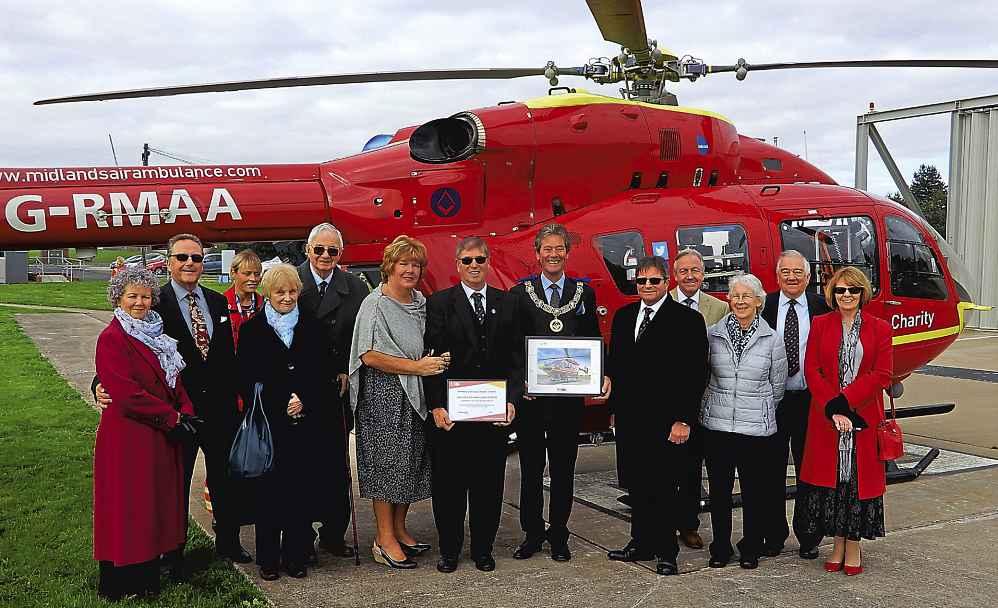
Yetitis aspirit of fraternity –and now,indeed, sorority across theorganisation that drives this passion for good work.
“There’s afeeling of togetherness thatyou get from Freemasonry that is not always easy to find anywhere else,” said Stephen. “Wetendtomeet in the evenings, six to eight times ayear. The meeting will consist firstly of abusiness part, and this will include the ceremonialstuff,where new people might come in or existing lodge members will ascend to different levels of masonry.” It is here of course thatFreemasonry’s somewhat fabled traditions –including the infamous Masonic handshake –come into play.“Freemasonryhas got its roots in medieval stonemasonry,” explained Stephen. “Centuries ago, masons would travel from place to place building cathedrals, castles, great houses, etc, and in theirline of work they used asystem of progression and recognition that we use today
“Stonemasons would begin their career as an apprentice. Once they had served their time and learned their skills they wouldbecome abit more experienced, ascending to thelevel of ‘craftsman’. And after ayear or two of that, they would eventually become amaster mason. Accomplished master stonemasons had very special ways of doing things, and they would not necessarily want those below them to know the secrets of their techniques before they had served their time as this might mean their skills would become less prized. This is where the history of the Masonic handshake comes from. Stonemasons would use certain handshakes between each other to indicate their level of expertise, and we use this tradition for our members to identify their level as aFreemason.
“Our different handshakes arethe only things in Freemasonry that, in theory,aren’t now open for discussion in public. But they are only used inside lodge rooms and areonly part of the short ceremonial side of what we do.”
The traditions of Freemasonry may haverelaxed somewhat over time, but the core philosophies behind the organisation stand strong. When new members are admitted to alodge, it is around these guiding values that their pledge is made.
“When you join theFreemasons you undertake to be agood person, to improve yourself and to help other people improve themselves,” said Stephen. “This is part of the ceremony for new members and has been for centuries. Themeeting will then, however,move on –theremightthen be atalkaboutanaspectof Freemasonry or on another subject–and then there’s asit-down meal. Lodge members will chat, havea beer or aglass of wine, and there is agreat deal of fun and fellowship. Nobody takes themselves too seriously,and we don’t discuss or debate politics and religion.” And as Stephen relates, the organisation is no longer restricted to male-only membership. “There are women’s Masonic lodges,” he said. “There are two umbrella organisations run from London for women Freemasons and they are hugely active. They are exactly the same in terms of their ethos and they do the same work, but they have women members. So any woman who is interested in Freemasonry can find out about it andcan join it –there arewomen’s lodges around the country,including those operating in Shropshire, which are enthusiastically and fully supported.”
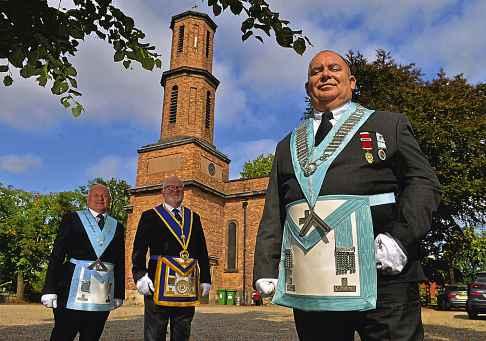
Indeed, Freemasonry membership in the modern day is not restrictive by design, with the organisation priding itself on bringing people together irrespective of their race, religion or other perceived differences that can lead to division. What seems to matter is simply having the right attitude.
“Wehave members from every occupation, or none at all,” said Stephen. “And thegreat thingis, if you asked me –and I’ve been in my lodge now since 1985 –I’m notsureIcould actually tell you what everybody did for aliving. It just doesn’t come up and isn’t about any differences between us on that score. Lodges are full of members from different backgrounds who are united because they want to do some good and benefiteach other and the community. Foranybody who is generally interested, basically all you have to want to be is somebody who feels that they want to be involved in doing something with other people, for other people, that involves enjoying yourself at the sametime. That is what Freemasonry is all about.” n Formore information on Freemasonry in Shropshire, visit www.shropshiremasons.org.uk
CLOCKWISE FROM TOPLEFT:
Money raised from aFreemasons Hog Roast in the Squarein Shrewsbury was been presented to ShareShrewsbury. Pictured are Colin Sharp, atrustee of ShareShrewsbury, with former Mayor Jane Mackenzie who set up the charity in memory of her daughter,and Terry Evans, aMaster Mason who did the cooking on the day; Freemasons of Shrewsbury with the van for the Shrewsbury Food Hub after a £60K fundraising collection in lockdown. Pictured areBryan Owen, Katy Anderson (Shrewsbury Food Hub), TomKiely,David Fryand Roger Pemberton; past Master Shaun Willocks, Chaplin of the Lodge David Foulkes and Master Russell Price outside Shrewsbury Masonic Hall which used to be achurch, and nowhouses the Salopian Lodge of Charity; ShropshireFreemasons with adonation forShropshire Air Ambulance; the Cavalier Centre, ahorse riding centrewhere the Freemasons were donating £10,000. Pictured areDaveKettle (Chair of ShropshireMasonic Charity Association), Roger Pemberton (Leader of ShropshireFreemasons Provincial), Rachel Lambert-Jones (Centre Manager), Sion the horse and High Sheriff of ShropshireSelina Graham; Freemasons of Oswestry donating £1,000 to Oswestry Foodbank.
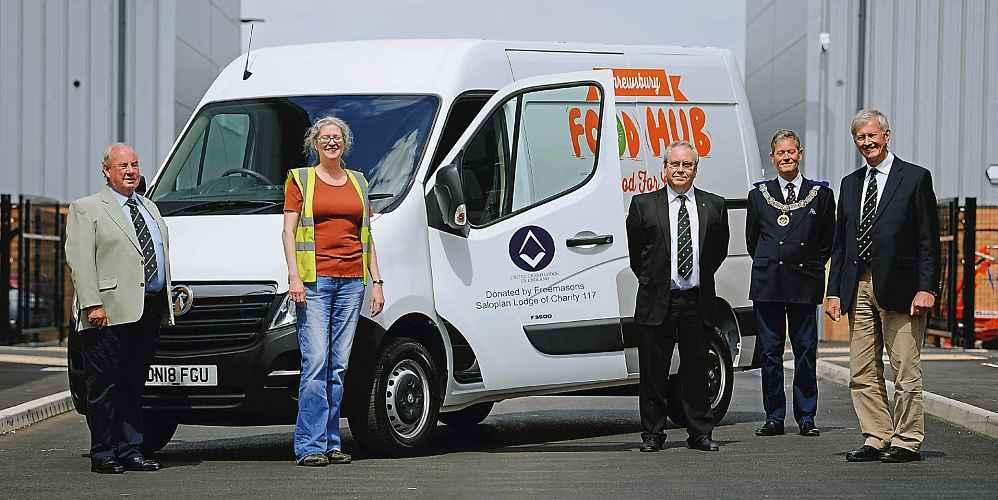
•Railway sleepers treated and untreated
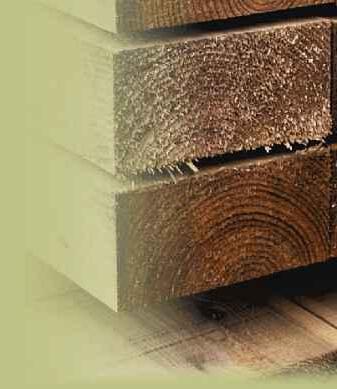
•Oak untreated sleepers now available New Oak Beams
•Fencing materials and accessories Wooden Gates
•Quality decking Stocks of sawn timber &plywood
•Trellis Posts Roofing materials &crash barriers
•Eco Wood Pellets Available










